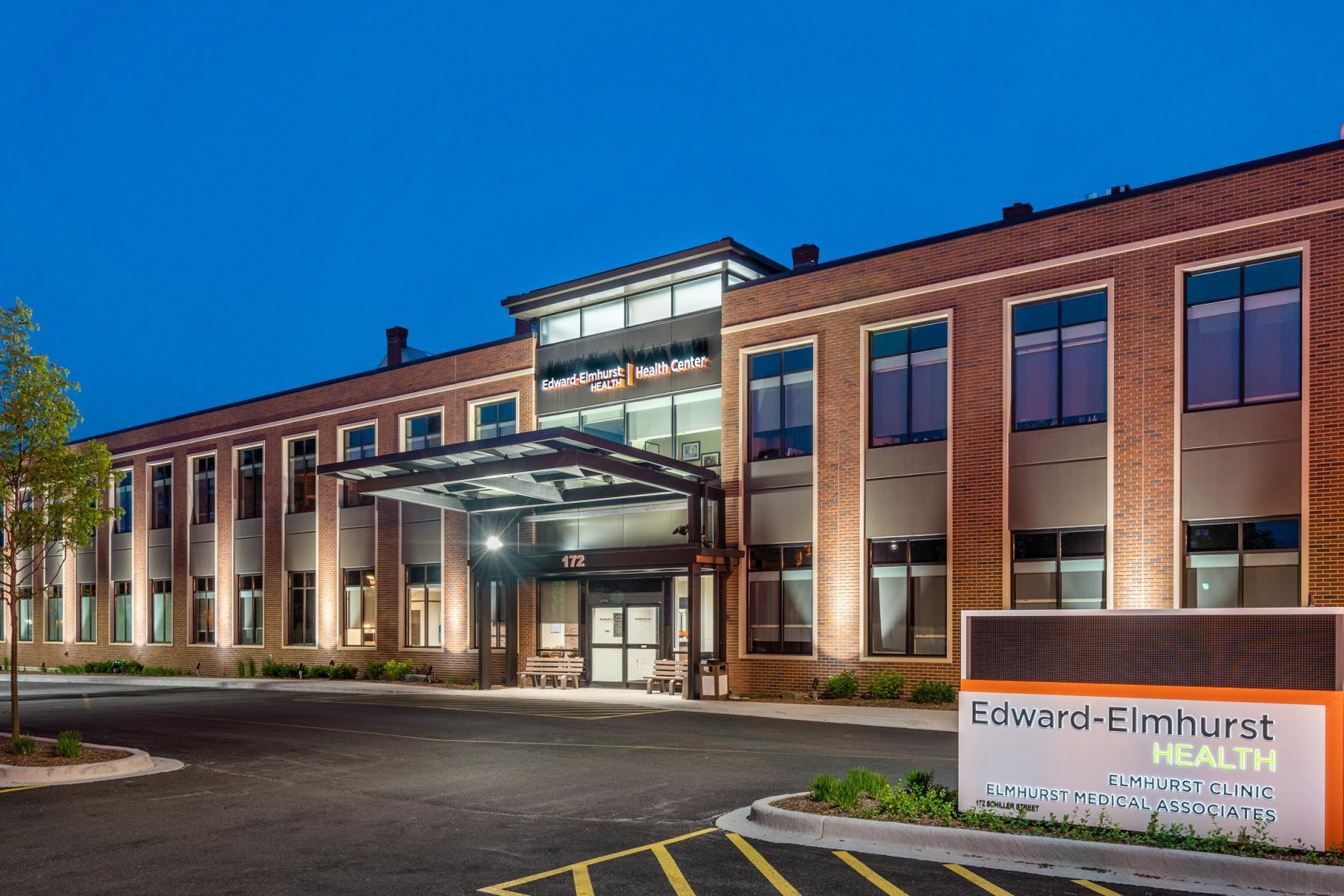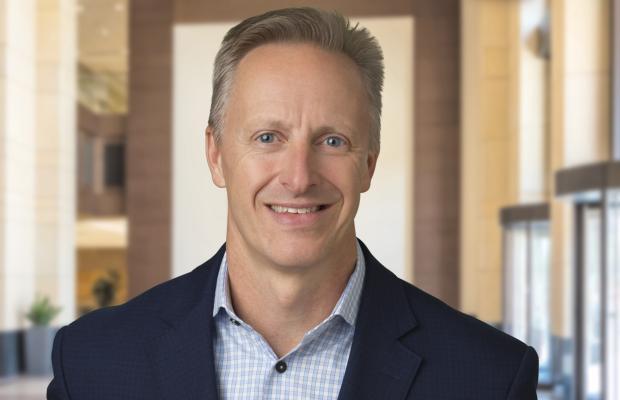Healthcare Real Estate Challenges & Changes: Q+A with Our Development Leaders

With providing top-notch patient care being at the top of your priority list, ensuring the right resources are in place is crucial to making that happen.
One of those key resources? Quality healthcare facilities.
As you continue to adapt to this post-COVID world with economic uncertainties and shifting healthcare trends, the number of real estate decisions you make can often stack up on your long list of Things to Decide.
Despite the necessity, these decisions defined by uncertainty can feel daunting. You are constantly weighing benefits with risk.
And you aren’t alone. There are commonalities across the board when it comes to what healthcare systems are focused on within real estate.
We spoke with our vice presidents of real estate development in healthcare—Ann Duginske Cibulka, Joe Fogarty, Jaime Northam and Kevin Schoolcraft—to learn how choosing a strategic partner that can assist with your current and future facility concerns is a critical step.
Read on to hear what our leaders cited as the common questions we hear from our healthcare clients—and how a real estate partner with an integrated design approach can benefit your facility needs and growth.
“How do we survive? Should we fix inpatient issues or grow outpatient?”
Joe: Priorities vary by region, by system…even within a system in a region. Some are laser-focused. For example, a healthcare system last week told me, ‘I need to get as many freestanding emergency departments as possible. We want to own them and have them within 20 miles of the existing hospital.’
Then if we shift to the Nashville market, for example, a lot of the systems are just trying to recover from COVID and the post-COVID massive labor crunch, not only in quantity but also cost. When your top line is static and your cost of labor is up, it makes it extremely hard to pencil. It feels like systems are getting out of the fog and trying to craft their priorities.
Their top priority is survival, in my opinion.
Ann: I would add, most of the healthcare systems are thinking, ‘Should I fix the issues with inpatient, or should I invest and grow outpatient?’
They are caregivers at their core, so I see most of them making marginal investments in inpatient because it’s not as much of a risk investing in what you have versus making the big decision of ‘We are going to explode freestanding emergency departments and try to make a new mark.’
Jaime: In the southwest, there has been an uptick in both on-campus healthcare facility projects as well as off-campus ambulatory clinics and facilities. Most of the health systems in this market have recently announced plans for new hospitals and/or extensive renovation and expansion projects at existing hospital facilities. We’ve seen interest in bringing in more of a “micro” master planning approach from our Ryan team to help systems solve their current and future facility needs quicker.
“How can you help us, exactly?”
Joe: It’s all about supporting clients and helping them understand what decision is best for them.
At Ryan, it is truly about being able to understand when a client says, ‘We aren’t ready to own it now; we need a rolling purchase option to do what we want when we want it’. The ability to listen and then craft our structure accordingly and support them is a game changer. We want to bring value and flexibility and make clients’ priorities our top priorities, as well.
With an extensive capital markets group behind us, we are unique. We can get creative and utilize capital structures that we’ve done for a different sector and use that for healthcare. We draw on all those resources to find the right fit.
Ann: We are seller-doers. We don’t have a business development model where one person is doing business development only. There is tremendous value in the fact that the same team members are held accountable throughout the entire project. It’s a much more pragmatic and progressive decision-making process.
Kevin: We can also help healthcare systems master plan their real estate decisions and identify the highest and best use of locations and how to plan things out. For example, Endeavor has worked with our A+E group, who has come alongside them and said, ‘Let us help you out and see what we can do on your campus and off campus that will help you meet your needs and make sense.’
Ryan has all the services in terms of master planning and assessing all the clients’ locations, leases, best use of capital, and how we allocate that in a way that maximizes the way they can provide service.
Joe: Taking that a step further: having master planning expertise is great, but if master planning is done in a vacuum, it can get you down the wrong road with no economic context. With Ryan, having all the various resources sit in and provide perspective in comprehensive planning is huge. Even, ‘Hey, I’ve seen this finance structure to help you solve this inpatient capital riddle.’ Ryan master plans within the context of multiple services: capital markets development, construction and property management.
Ann: At Ryan, we navigate that through a robust matrixed outreach; we consistently touch base with different decision-makers and coordinate that outreach. When I first started, construction would call and then we’d call and it’d be awkward, so we have gotten much more organized. We now understand that you must have a relationship with everyone: facility project management, the board…you have to be engaged with the entire team.
“How can you understand our position?”
Ann: Because we have people at Ryan who have been healthcare executives, we utilize their unique perspectives Ryan was early adopters to this model in 2019 with the hiring of Mike McMahan, who served as an executive for a large Minnesota-based healthcare system and now is our executive vice president in healthcare.
Kevin: It's great to have Mike because he can really speak to the healthcare system’s C-Suite and talk more operational in nature and what drives our client’s needs. It's all about understanding and he [Mike McMahan] can do that easily because he’s been in their position and understands the day-to-day.
“What do we do with excess land we’ve already purchased?”
Ann: I’ve recently had a healthcare system engage Ryan because they bought a bunch of land but they didn’t have a plan in place on how they would use the excess land. They are now struggling financially and need to invest.
Kevin: Similarly in the Dallas market, a major tollway system is getting built right now, and numerous hospital systems have purchased 40, 50, 60 acres of land that probably won't get developed in the next 10 years. They need help in understanding how to develop the land and maximize its value.
Ann: A core advantage of Ryan is the fact that we are a top developer in many other sectors. More and more, we have to look at these healthcare systems’ land for mixed-use. Healthcare systems are now forced to think about the remaining land they had to purchase to get a prime site. The connection and cohesion of other sectors is a benefit to Ryan because I can say, ‘My colleague in retail sits right next to me; we could work together to put in a Whole Foods on your land.’ We offer a wide range of expertise.
Joe: I know of a healthcare system that owns six pieces of land that either haven’t been used or have underutilized office buildings on the property. I wholeheartedly agree one of the best things Ryan can do is help systems understand how their land be utilized for multifamily or medical office buildings or mixed-use projects. On a hospital campus, many of these newer developments have those components of mixed-use, and it is beneficial.
"What are the benefits of design-build vs. design-bid-build?"
Kevin: There is a bit of misunderstanding around the design-build process vs. the design-bid-build process. Design-build can be more advantageous. From Day 1, you have a trusted partner who is in the loop throughout the process. That way, potential problems can be identified—and solved—more effectively and efficiently.
I’ve experienced it firsthand before my time at Ryan. Coming from the private equity world, we didn't have a general contractor, so we hired architecture + engineering on multiple occasions where we went through the designers, only to go, ‘Oh no, we can’t afford to do that. We have to go back to the drawing board.’ It had gone so far off the rails that we couldn’t recover. We had to scrap it and go to a new architect, start with a new vision, and build and design something we could afford.
So it’s beneficial to have a trusted pre-con and construction partner in the initial phases of the design to say, ‘Well, you can do that, but here’s what it’s going to mean in terms of cost and keeping the train on the tracks rather than value engineering things after the C-Suite has seen the glorious and beautiful designs and then say, ‘Oh geez, that’s so far over budget’ and then have to walk backward.
Jaime: I would add we’ve seen recent success with our healthcare clients on the integrated design-build methodology and the integrated project delivery method. They steal the show when it comes to cost and time-sensitive healthcare projects. A truly integrated design-build process, which involves collaboration from the beginning of the project concept, allows for a proactive approach to identifying and solving problems before they occur. This saves time, money, and the hassle of dealing with numerous change orders. With the critical healthcare facility needs we are seeing, this is a key approach we are seeing being utilized with high success—again, saving time and money—which is so critical to our health system environment.
Healthcare real estate is a multifaceted, nuanced arm of the industry that requires you to balance: balance risk with reward, new with old, inpatient with outpatient, needs with wants, and more.
But one thing that never waivers: your commitment to patient care.
As you identify your top priorities to provide patients with top-notch facilities, you don’t have to tackle the process alone. Collaborating with strategic real estate partners who have experience across multiple real estate sectors—and have leaders who have stepped into your shoes—can help you write stories of success for patients, families and communities alike by providing the best facilities for your needs and highest use of land for strategic, intentional use.
CONNECT WITH US
Contact Mike for your healthcare development needs.


